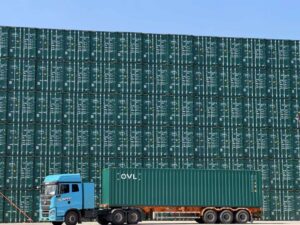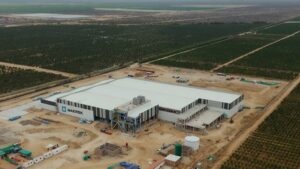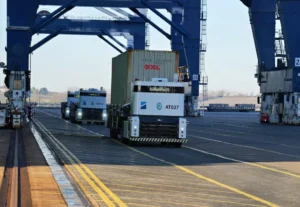The maritime industry is rapidly diving into the world of green and blue hydrogen.
As a zero-emission fuel, clean hydrogen liquid can be transformative for ports due to its ability to reduce greenhouse gases, urban pollution, and fossil fuels.
The fuel can also provide benefits in reducing noise pollution and NOx compared to fossil-fuelled operations.
The fuel provides untold benefits for ports: in cargo-handling equipment; supply chain stakeholders; and, in the future, potentially hydrogen-powered vessels.
Though concerns remain over the application of hydrogen into fuel cells and the life cycle of the renewable fuel, the generation, storage, and exportation of the fuel could offer ports and intriguing new business model in the decades ahead.
Green hydrogen production
Liquid hydrogen fuel has traditionally been generated using environmentally damaging fossil fuels: natural gas, fossil fuel by-product, or coal.
Brown hydrogen is made from coal through the process of gasification. Grey hydrogen accounts for more than 75% of the world’s production of hydrogen, extracted from natural gas via a method called steam-methane reforming.
The downsides to both of these methods is the emitting of CO2.

However, ports are increasingly investing in leveraging their expansive land facilities to generate hydrogen through electrolysis.
Electrolysis uses electricity to generate liquid hydrogen fuel. Ports, which in some areas benefit from a healthy mix of solar power, wind power, and hydrogen power, can use green electricity to produce the fuel: producing green hydrogen.
Blue hydrogen production
Blue hydrogen is produced using natural gas, just like standard ‘grey hydrogen’. CO2 is released when hydrogen is produced from natural gas. By capturing and storing this CO2 in empty gas fields it is prevented from entering the atmosphere.
The Port of Amsterdam announced it will be developing a blue hydrogen H2Gateway plant, aiming to store the captured carbon in depleted gas fields nearby.
Carbon capture and storage is the process of capturing was CO2, transporting it to a storage site, and depositing it where it will not enter the atmosphere.

Related stories
- Port of Antwerp collaborates in hydrogen-powered HyTrucks initiative
- Mitsui OSK Lines to trial hydrogen-powered RTG at Kobe container terminal
- Hydrogen Reach Stacker in development as part of H2PORTS
- The Port of Townsville to play transformative role for green hydrogen
- Feasibility study begins for green hydrogen plant at Maasvlakte, Rotterdam








